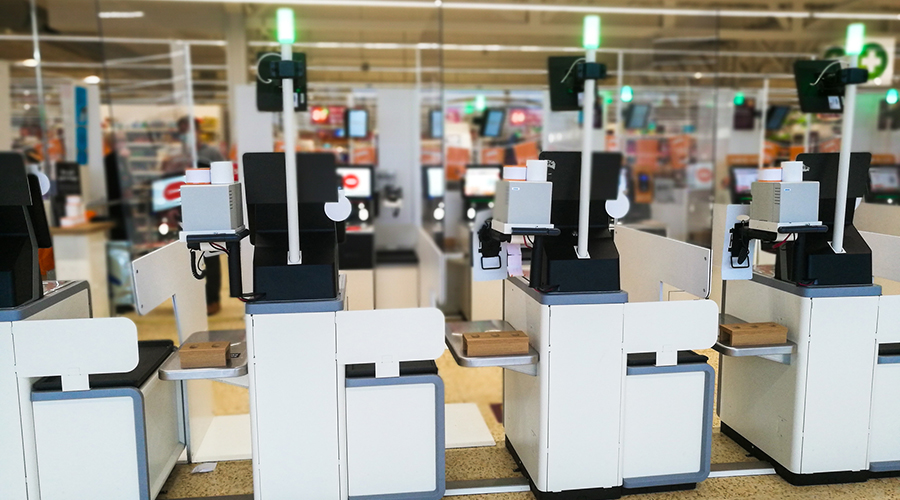
on Posted on Reading Time: 2 minutes
Autonomous checkout is based on a highly tech-savvy ecosystem, in which customer experience and the way businesses handle their operations is completely automatized using self-aware stores, connected merchandising, and automated supply-chain management. With the advancement of Artificial Intelligence (AI) and digital transformation, network connectivity, and 5G-distributed edge-cloud capabilities, these advanced use cases are becoming a reality.
These use cases have different SLA and QoS network requirements versus the mobile broadband network, which makes the use cases difficult to deploy on LTE. Utilizing SD-WAN technology with 5G as underlay network connectivity with network slicing, the traffic can be handled efficiently to support enterprise SLAs at a lower cost without loading the network. Network slicing technology is used for enterprise network traffic differentiation for better quality of service (QoS) and security.
Autonomous checkout benefits all retail segments, including vending, micro-markets, convenience stores and big-box retailers. Given the global pandemic, customers prefer a cashier-less, expedient checkout, which is increasing the demand for this technology in retail.
In the case of vending, autonomous retail units enable customers to use a mobile app to interact with the cabinet/cooler, easily pick the items, and get the billing confirmation on their mobile device within seconds of payment. This system addresses the customer’s need for contact-less interaction, reduces friction in the buying process, and can be deployed in a variety of retail spaces.
AT&T, Ericsson, and VMware have built an SD-WAN with 5G and network slicing Proof of Concept (PoC) (MEF 3.0 PoC (133)) demonstrating Autonomous Checkout to showcase the technology stack and better user experience. Automation is the key for time-to-market for operators to provide network access and connectivity to enterprises (e.g. retailers). The key enablers are orchestration on network elements, in combination with an application-aware, cloud-centric SD-WAN solution.
With a simple upgrade using a retrofit kit, this technology can turn an existing cooler/cabinet into an autonomous retail unit. The retrofit kit includes a computer vision-enabled camera, 5G connectivity, and network Edge Cloud (in which edge network and cloud network converge on resource, storage, and security components) running AI model processing. The AI models hosted in the Edge Cloud detect the retail items shopped and prepare the payment transaction by interfacing with the inventory and billing services hosted on the cloud.
As autonomous checkout is adopted in the market, the challenges in scaling the operations can be mitigated through cellular connectivity, remote management, and Edge Cloud deployments. These operational aspects are key enablers for deployment and management in retail locations.
Autonomous checkout is expected to become more mainstream as adoption of 5G and Edge Cloud increase. That will help drive more innovation and, ultimately, drive commercial deployments.
Learn More
Learn more about: MEF 3.0 PoC (133) SD-WAN with 5G & Network Slicing
This PoC was presented at the MEF PoC Showcase in Q1 2021. Watch the Presentations on YouTube
About MEF’s PoC Program & Showcase
The MEF 3.0 Proof of Concept program effectively fosters innovation, seeds new MEF standards and projects, and accelerates our existing work within the ICT industry by providing our members—including service providers, technology suppliers, and other stakeholders within the ICT industry—the opportunity to collaborate on MEF 3.0-based use cases throughout the year.
Initiated by MEF members and facilitated by MEF staff, each MEF 3.0 PoC receives a unique, identifying number that remains unchanged as its title and messaging evolves over the life of the project.
PoC work is highlighted in public showcases and award presentations that explore individual Proofs of Concept. Learn more about these enabling technologies and the MEF 3.0 PoC Program.

